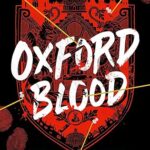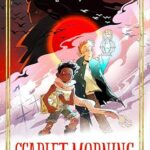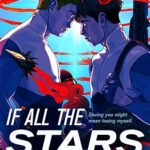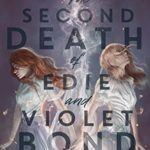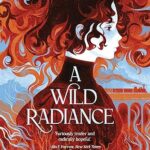
Guest Post: The Lies of Alma Blackwell by Amanda Glaze
Prepare to be enchanted by Amanda Glaze’s newest YA book, a moody, romantic gothic mystery, The Lies of Alma Blackwell, releasing on August 27th. Today we have Amanda sharing a guest post about Drawing Inspiration from Secret Histories! I love these insights into author’s processes that inspire them. Check it out below and add this one to your TBR!
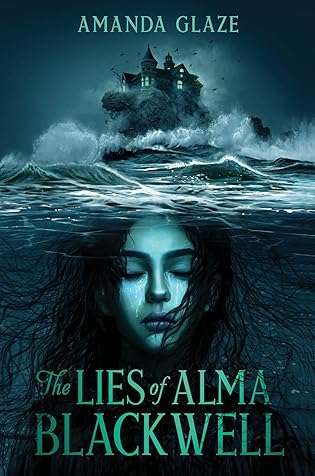
The Lies of Alma Blackwell
by Amanda GlazePublished by: Union Square and Co
Genres: Mystery, Paranormal, Young Adult
Bookshop
Goodreads
Atmospheric and sweepingly romantic, this gothic mystery tells the story of a girl poised to inherit a famously haunted California mansion and a stranger who arrives with a dark warning...
For over a century, the Blackwells have protected the town of Hollow Cliff from vengeful spirits.
Seventeen-year-old Nev is ready to take over for her ailing grandmother as the town's witch protector--unlike her mother, who left when Nev was a child and never looked back.
When a stranger arrives at Blackwell House of Spirits to fill a tour guide opening, Nev reluctantly offers him the job.
Nev doesn't trust Cal. He knows more than he's letting on about Blackwell House--and about Nev herself.
But Nev soon learns that she has been lied to her whole life. By following the trail of clues left behind in Blackwell House by her most powerful witch ancestor, Nev uncovers an unspeakable legacy of murder and lies...and realizes that a stranger may be the one person she can trust.
Guest Post: Amanda Glaze
Drawing Inspiration from Secret Histories
I can’t resist a good secret.
Like most writers I know, I am a shameless eavesdropper whenever I’m out in public.
Whoever I’m having coffee with doesn’t stand a chance of holding my attention in the face of whispered confidences at the table behind us. Uttering the words, “Don’t tell anyone, but…” in my hearing is the equivalent of waving a bright red flag in front of a frothing bull. My adrenaline spikes, my breath hitches, and (according to external accounts) my eyes grow cartoonishly wide.
A quick disclaimer to any friends who may be reading this: please be assured that I will take each and every one of the secrets you have entrusted to me to the grave! Okay, now that that’s out of the way, I’ll speak directly to my fellow writers and storytellers because my guess is we are alike in one very significant way, and it is this: the only thing I love more than learning a good secret? Is telling a good secret. And do you know what is full of secrets?
History.
I love history. I love that studying it reveals so much about why we live our lives the way we do today. I love the revelations that come from delving into your own personal and familial histories, and I love that truly examining our cultural history forces us to ask the deep—and sometimes uncomfortable—questions that are so profoundly necessary.
The writer in me also loves that history can’t be trusted. Every chronicle, every account,
every diary, and every newspaper article was written by a human being with their own unique bias, and I love that if you peer underneath every textbook and every Wikipedia page, you will find an untold number of secret or forgotten histories impatiently waiting to be explored.
I heard an NPR story recently about an ambitious group of scientists who are using sonar to map the entire seafloor. At the moment, only about twenty-five percent of the seafloor has been mapped in detail, and only a few years ago, that number was as low as six percent. Since about seventy percent of Earth’s surface is covered by water, it’s pretty wild to think that—even with today’s sophisticated technologies—more than half of our world remains a mystery to us.
I think of history in the same way. It is the foundation of the world we live in, and yet to say we truly know even twenty-five percent of it is generous. And to the writer in me, that is a gift.
My first book, The Second Death of Edie and Violet Bond, was inspired by an ancestor of mine named Edith Bond and her twin sister, Violet. More specifically, it was inspired by a photograph of them as teenagers that was displayed on a bookshelf in my childhood home. I knew little about them apart from the fact that they were spirit mediums during the height of the Victorian-era Spiritualist movement, and that led me to—many years later—research the lives of nineteenth century Spiritualists.
The hidden history that I stumbled upon during this research was that women—in particular young, teenage girls—were thought to be the best spirit mediums. This was during a time when women were generally not encouraged to speak publicly or take on leadership roles, and yet as Spiritualism swept the nation, so did young women. Teenage girls who had previously been told to sit down and be quiet were all of the sudden traveling the country conducting séances and channeling spirits as they gave trance lectures in front of rapt audiences about the important moral and political issues of the day. It might have been a coincidence that the spirits these girls channeled so often had “radical views” about everything from women’s suffrage and child labor laws to marriage reform, or it might be possible that these clever young women took advantage of the loophole the role of spirit medium offered to make their voices heard. Whatever the answer, I knew right away that this was a secret history I had to share, and the fictional versions of Edith and Violet were born.
My upcoming second book, The Lies of Alma Blackwell was also inspired by a secret history, although in a different way.
The Winchester Mystery House in San Jose, California is a bizarre yet beautiful mansion
with a mysterious origin story that has always fascinated me. The house itself is now a museum with daily tours that highlight its many architectural oddities, such as staircases that dead-end into ceilings and doors that open onto nothing but air. It was designed and built by a woman named Sara Winchester in the late nineteenth century who was the widow of William Winchester, famous for inventing the Winchester Rifle, aka “The Rifle That Won the West.”
There are many theories that seek to explain why Sara built such a strange, maze-like house, but one of the most popular is that, while grieving the death of her husband and young child, Sara sought the advice of a spirit medium who instructed her to build a home for the many spirits whose deaths had been caused by the bloody history of her husband’s rifle. Sara did so, but the house she built resembled a labyrinth because she sought to confuse—and hide from—the spirits who continued to torment her in her own home.
There is another less satisfying theory, and it is that Sara Winchester was simply an over-ambitious amateur architect, and the fact that there are so many curious features in the house—like windows built directly into the floor—can be chalked up to bad planning. We’ll likely never know the truth because—like so much of history—only a partial view of the real story is visible to us. And that is the other gift that history offers us as writers. Not only are there a plethora of untold stories and unanswered mysteries to explore, but history also grants us the priceless opportunity to ask: What-if?
What if the foundation of Sara Winchester’s house held a darker secret?
What if that secret was hiding in plain sight?
What if her descendants were still living in that house today? What if they discovered the truth, and what if that truth threatened destroy their lives?
While working on the story that would become The Lies of Alma Blackwell, I found myself thinking a lot about the power these secret histories hold over our present. Is what’s past truly past? If something is done, can it truly not hurt us now?
By mapping the seafloor, scientists will be able to give more advance warning to coastal areas in advance of a tsunami, which will likely save countless lives. Unearthing the secrets lurking in our history may not save lives in the same way, but could it play a role in transforming them?
It’s one of the questions the main character in my second novel is grappling with. Today’s young people are perhaps more aware than any previous generation of the bias inherent in the history we are taught, and her character is in many ways inspired by my interactions with these bright, young, questioning minds.
The history we know is—at most—an incomplete sliver of our origin story. Simmering
beneath its surface, tucked into shadowed, forgotten corners, are countless stories waiting to be found and told.
But you may not want to wait too long to find them.
Not all histories are content to wait.




